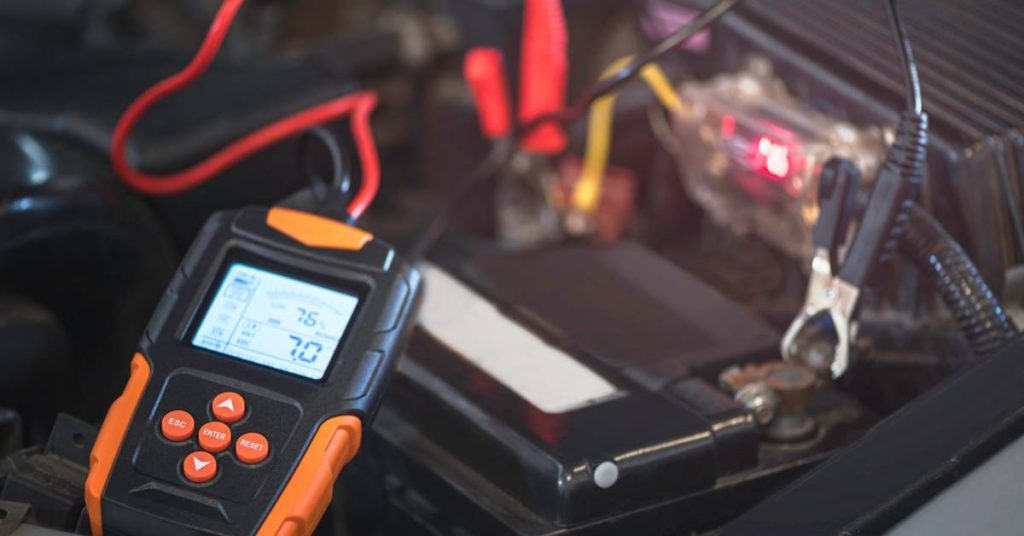Batteries play a crucial role in powering our modern lives, from small gadgets like smartphones to larger systems such as electric vehicles and renewable energy storage. Battery capacity is the key to understanding how much power a battery can store and deliver.
It doesn’t matter if you’re shopping for a smartphone, drone, or electric vehicle—ensuring you have enough power for your needs is essential to keeping your equipment running. With this ultimate guide to understanding battery capacity ratings, you can make informed decisions about your battery’s energy storage and usage.
Understanding the Basics: What Is Battery Capacity?
Battery capacity refers to the amount of energy a battery can store and supply to a device. It’s usually measured in milliampere-hours (mAh) or watt-hours (Wh).
- mAh (milliampere-hours): Commonly used for smaller devices such as smartphones and laptops, mAh indicates how long a battery can deliver a certain current. For example, a 4,000 mAh smartphone battery should last longer than a 3,000 mAh battery, assuming all other conditions are identical.
- Wh (watt-hours): Often used for larger batteries in electric vehicles or home energy storage systems, Wh calculates the actual power delivered over time, which is useful for determining how far an electric car will travel or how long a home battery backup will last.
To convert between the two:
- mAh x voltage = Wh x 1,000
This information is often crucial in determining how long your device can stay powered before needing a recharge.

The Importance of Accurate Battery Capacity Ratings
Battery capacity ratings are fundamental specifications manufacturers provide to help consumers make informed choices. Here’s why accuracy matters:
- Consumer confidence: Accurate ratings ensure users get the performance they’ve been promised. Overestimated capacity ratings can lead to disappointment and product distrust.
- Device compatibility: The wrong capacity could cause damage to a device or hinder performance. Devices are often optimized for specific battery sizes.
- Meeting power needs: Whether you’re planning a road trip in your EV or counting on your drone for a long flight, precise ratings allow you to calculate how much power you’ll need.
- Safety: Overcharging a battery due to inaccurate capacity ratings can pose safety risks, such as explosions or fires. Therefore, accurate ratings are critical for ensuring consumer safety.
By understanding capacity ratings and how to factor them into your battery installation, you can ensure your devices operate correctly and last as expected.
Common Misconceptions About Battery Capacity
There are several misconceptions regarding battery capacity ratings. Let’s debunk a few of them here:
Myth 1: Bigger Capacity Always Means Better Performance
A higher capacity often means longer runtime, but factors like device power consumption, weight, and battery size can affect overall performance.
Myth 2: mAh Is All That Matters
While common for small devices, capacity alone doesn’t account for other critical factors such as voltage and energy density, which are crucial for larger applications.
Myth 3: The Full Rated Capacity Is Available
Battery capacities are often measured under ideal conditions. Real-world usage in extreme temperatures, background usage, and damage to the cell can all reduce the actual usable capacity.
Myth 4: Charging Impacts Capacity
Modern batteries, particularly lithium-ion, are designed with advanced charging systems to handle partial charges and frequent top-offs without significant degradation.

Types of Battery Technologies and Their Capacity Ratings
Battery technology plays a significant role in capacity ratings. Here are some common battery types and how their capacity ratings differ:
- Lithium-ion (Li-ion): High energy density and commonly used in smartphones, laptops, and EVs, known for stable performance but sensitive to overcharging
- Nickel-metal hydride (NiMH): Found in applications like hybrid vehicles, offers decent capacity but loses charge faster over time
- Lead-acid: Used in backup power systems and vehicles, low cost but has limited capacity compared to newer technologies
- Solid-state batteries: Holds promise for greater capacity and safety but is still expensive and under development
Accounting for each type of battery and its benefits and drawbacks will help you find a cell that fits your specific needs.
How To Interpret Battery Capacity Ratings
Understanding capacity ratings doesn’t have to be complex. Here’s a quick checklist to help you interpret them accurately:
- Look at the full specifications: Check both mAh/Wh and voltage to get a complete picture of a battery’s power capability.
- Compare them under similar conditions: Capacity ratings should be compared only if the tests are conducted under the same conditions (e.g., temperature, usage patterns).
- Understand the usable vs. rated capacity: Account for real-world use cases, as usable capacity is often less than what’s rated.
- Consider the application: Different battery technologies offer varying levels of capacity, so it’s crucial to consider the intended use case when comparing ratings.
Having a full grasp of your battery’s capabilities will allow you to get the most out of your investment.
Factors Affecting Battery Life Over Time
Extending a battery’s life and maintaining its capacity doesn’t have to be a challenge. Here are the main factors to consider:
1. Temperature Exposure
Extreme temperatures, both hot and cold, can significantly degrade a battery’s life. Excessive heat accelerates chemical reactions within the battery, leading to capacity loss, while prolonged exposure to low temperatures can reduce performance temporarily or permanently.
2. Charge Cycles
Every battery has a finite number of charge cycles before its capacity begins to diminish. Frequent charging and discharging can cause the battery to wear out faster over time.
3. Depth of Discharge
Regularly discharging a battery to very low levels can strain its components and reduce its lifespan. Maintaining partial discharges and avoiding complete depletion typically helps preserve battery health.
4. Quality of Charging Equipment
Using substandard or incompatible chargers may provide irregular voltage, which can lead to overheating or overcharging, thereby reducing the battery’s efficiency and longevity. Investing in high-quality charging equipment is crucial for maintaining your battery’s life.
5. Aging and Chemistry
All batteries experience natural wear and chemical degradation over time. The specific chemistry of the battery (e.g., lithium-ion vs. nickel-metal hydride) plays a role in determining how quickly its performance deteriorates.
The Future of Battery Technology and Capacity Ratings
Trends in battery technology you should watch for include:
- Solid-state batteries: Expected to offer higher capacities, improved safety, and reduced degradation compared to current lithium-ion technology
- AI-powered battery management: Can predict battery capacity degradation and optimize power usage for a longer runtime
- Eco-friendly alternatives: Including bio-based or recyclable materials for batteries
Researchers and battery manufacturers are working tirelessly to enhance battery capacity while making them smaller, lighter, and safer to use.
Making Sense of Battery Capacity
Battery capacity plays a pivotal role in ensuring that devices operate efficiently. With this ultimate guide to understanding battery capacity ratings, you can remove the guesswork from battery performance and make more informed decisions.
At Battery Distributors, we’re dedicated to ensuring you can power your devices. A Motorola radio battery replacement is the perfect choice for anyone who needs a high-quality battery that’s compatible with a range of devices. Let us help you make the right purchase today.












One thought on “Ultimate Guide to Understanding Battery Capacity Ratings”